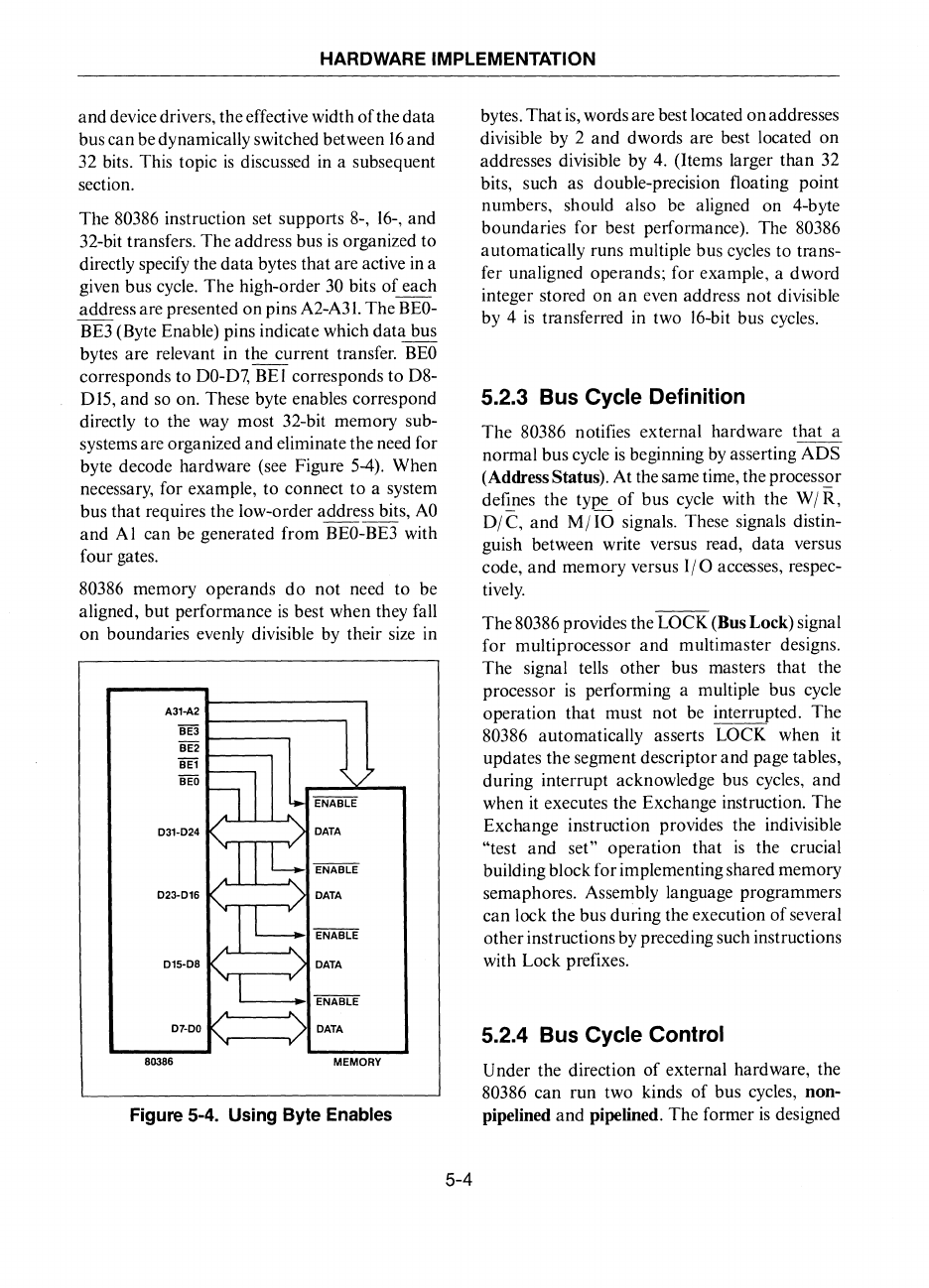
HARDWARE IMPLEMENTATION
and device drivers, the effective width of the data
bus can be dynamically switched between
16
and
32
bits. This topic
is
discussed
in
a subsequent
section.
The
80386 instruction set supports
8-,
16-,
and
32-bit transfers. The address bus
is
organized to
directly specify the data bytes that are active
in
a
given bus cycle. The high-order
30
bits
of
each
address are presented on pins
A2-A31.
The
BEO-
BE3 (Byte Enable) pins indicate which data bus
bytes are relevant in the current transfer.
BEO
corresponds to
DO-D7,
BEl corresponds to D8-
DIS, and so on. These byte enables correspond
directly to the way most 32-bit memory sub-
systems are organized and eliminate the need for
byte decode hardware (see Figure
5-4).
When
necessary, for example, to connect to a system
bus that requires the low-order address bits,
AO
and AI can be generated from BEO-BE3 with
four gates.
80386 memory operands do not need to be
aligned, but performance
is
best when they fall
on boundaries evenly divisible
by
their size in
A31-A2
BE3
t----------.
BE2
BEl
t-------.
BED
031-024
023-016
015-08
07-00
80386
MEMORY
Figure 5-4. Using Byte Enables
5-4
bytes. That
is,
words are best located on addresses
divisible by 2 and dwords are best located on
addresses divisible by
4.
(Items larger than
32
bits, such as double-precision floating point
numbers, should also be aligned on 4-byte
boundaries for best performance). The
80386
automatically runs mUltiple bus cycles to trans-
fer unaligned operands; for example, a dword
integer stored on
an
even address not divisible
by 4
is
transferred in two
16-bit
bus cycles.
5.2.3 Bus Cycle Definition
The 80386 notifies external hardware that a
normal bus cycle
is
beginning
by
asserting
ADS
(Address Status). At the same time, the
process~r
defines the type
of
bus cycle with the
WI
R,
DI
C,
and
MI
10 signals. These signals distin-
guish between write versus read, data versus
code, and memory versus
110 accesses, respec-
tively.
The 80386 provides the LOCK (Bus Lock) signal
for multiprocessor and multimaster designs.
The signal tells other bus masters that the
processor
is
performing a multiple bus cycle
operation that must not
be
interrupted. The
80386 automatically asserts LOCK when
it
updates the segment descriptor and page tables,
during interrupt acknowledge bus cycles, and
when
it
executes the Exchange instruction. The
Exchange instruction provides the indivisible
"test and set" operation that
is
the crucial
building block for implementing shared memory
semaphores. Assembly language programmers
can lock the bus during the execution of several
other instructions by preceding such instructions
with Lock prefixes.
5.2.4 Bus Cycle Control
Under the direction
of
external hardware, the
80386 can run two kinds
of
bus cycles,
000-
pipelioed and pipelioed. The former
is
designed


















